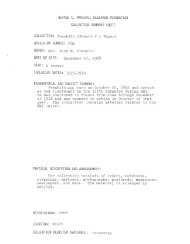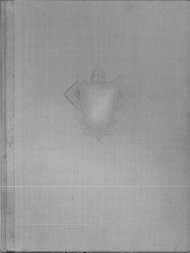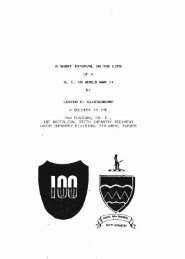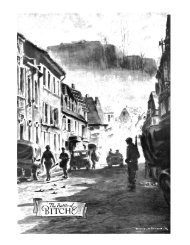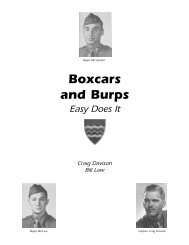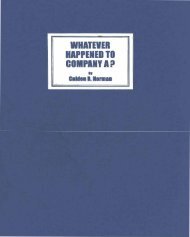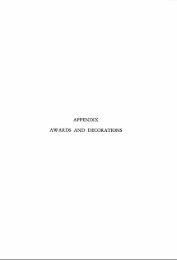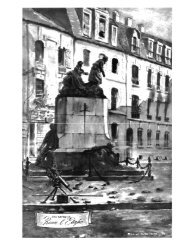a guide - The George C. Marshall Foundation
a guide - The George C. Marshall Foundation
a guide - The George C. Marshall Foundation
You also want an ePaper? Increase the reach of your titles
YUMPU automatically turns print PDFs into web optimized ePapers that Google loves.
Infantry at Fort Screven, near Savannah, Georgia. At this<br />
same time, <strong>Marshall</strong> became commanding officer of District<br />
F ofthe Civilian Conservation Corps. <strong>The</strong> FORT MOULTRIE<br />
correspondence (1933) documents <strong>Marshall</strong>'s few months as<br />
commander of the Eighth Infantry Regiment at Fort Moultrie,<br />
near Charleston, South Carolina, in the summer of 1933.<br />
<strong>The</strong> fourth subgroup treats <strong>Marshall</strong>'s years in Chicago as<br />
senior instructor to the ILLINOIS NATIONAL GUARD<br />
(1933-1936). <strong>The</strong> VANCOUVER BARRACKS subgroup<br />
(1936-1938) deals with <strong>Marshall</strong>'s assignment to command<br />
the Fifth Infantry Brigade at Vancouver Barracks, Washington.<br />
<strong>The</strong>se five subgroups are made up entirely of correspondence<br />
files. Each subgroup contains general correspondence which<br />
is chronologically arranged. Included with the correspondence<br />
are memoranda, extracts of orders, special orders, and field<br />
orders.<br />
Most of these papers deal with personal business or are<br />
private correspondence with friends and associates; some<br />
semi-official business is represented. <strong>Marshall</strong> wrote a great<br />
number of letters of commendation and recommendation<br />
during this period. Virginia Military Institute affairs are often<br />
mentioned, among them the selection of a new Superintendent,<br />
a position for which <strong>Marshall</strong> was considered.<br />
In addition to the general correspondence, the ILLINOIS<br />
NATIONAL GUARD subgroup includes alphabetically arranged<br />
acknowledgments of the letters of congratulations<br />
which <strong>Marshall</strong> received upon his promotion to brigadier<br />
general in 1936. <strong>The</strong> VANCOUVER BARRACKS papers<br />
include a separate, chronologically arranged subseries of correspondence<br />
concerning invitations.<br />
Throughout these first five subgroups there is correspondence<br />
with important commanders ofthe United States Armed<br />
Forces: Brigadier General H. H. Arnold, Major General Fox<br />
Conner, General Malin Craig, Major General Frank McCoy,<br />
and General John J. Pershing are a few of the most outstanding.<br />
A name index to each of these five subgroups is available<br />
at the <strong>Marshall</strong> Library.<br />
VI. PENTAGON OFFICE<br />
<strong>The</strong> PENTAGON OFFICE subgroup (1938-1951) has the<br />
personal papers of Army Chief of Staff <strong>Marshall</strong> as its core. It<br />
would be convenient to maintain the symmetry of the subgroup<br />
titles by calling this subgroup "Chief of Staff." <strong>The</strong>re are,<br />
xvi




